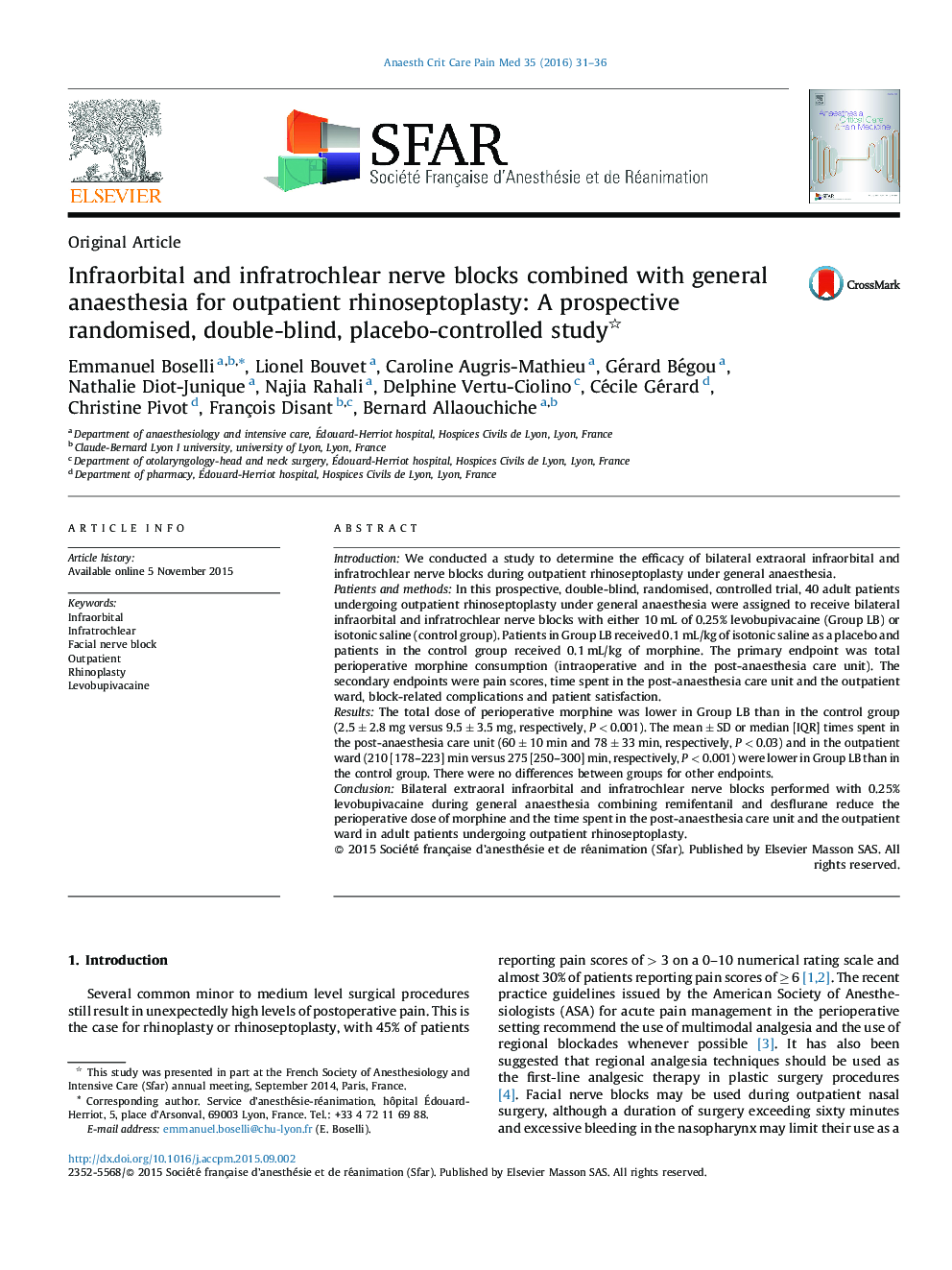| Article ID | Journal | Published Year | Pages | File Type |
|---|---|---|---|---|
| 2741894 | Anaesthesia Critical Care & Pain Medicine | 2016 | 6 Pages |
IntroductionWe conducted a study to determine the efficacy of bilateral extraoral infraorbital and infratrochlear nerve blocks during outpatient rhinoseptoplasty under general anaesthesia.Patients and methodsIn this prospective, double-blind, randomised, controlled trial, 40 adult patients undergoing outpatient rhinoseptoplasty under general anaesthesia were assigned to receive bilateral infraorbital and infratrochlear nerve blocks with either 10 mL of 0.25% levobupivacaine (Group LB) or isotonic saline (control group). Patients in Group LB received 0.1 mL/kg of isotonic saline as a placebo and patients in the control group received 0.1 mL/kg of morphine. The primary endpoint was total perioperative morphine consumption (intraoperative and in the post-anaesthesia care unit). The secondary endpoints were pain scores, time spent in the post-anaesthesia care unit and the outpatient ward, block-related complications and patient satisfaction.ResultsThe total dose of perioperative morphine was lower in Group LB than in the control group (2.5 ± 2.8 mg versus 9.5 ± 3.5 mg, respectively, P < 0.001). The mean ± SD or median [IQR] times spent in the post-anaesthesia care unit (60 ± 10 min and 78 ± 33 min, respectively, P < 0.03) and in the outpatient ward (210 [178–223] min versus 275 [250–300] min, respectively, P < 0.001) were lower in Group LB than in the control group. There were no differences between groups for other endpoints.ConclusionBilateral extraoral infraorbital and infratrochlear nerve blocks performed with 0.25% levobupivacaine during general anaesthesia combining remifentanil and desflurane reduce the perioperative dose of morphine and the time spent in the post-anaesthesia care unit and the outpatient ward in adult patients undergoing outpatient rhinoseptoplasty.
